 |
 |
 |
| |
PLWH AND CANCER EXHIBIT UNIQUE PATTERN OF ACTIVATED AND EXHAUSTED CD8+ T CELLS
|
| |
| |
CROI 2021 March 6-10 Reported by Jules Levin
Omkar Chaudhary1, Diane Trotta1, Xiuping Chu2, Chip Bradley2, Xun Wang2, Jason Okulicz3, Ryan C. Maves4, Karl Kronmann5, Christina Schofield6, Jason Blaylock2, Brian Agan2, Anuradha Ganesan2, Brinda Emu1
1Yale University, New Haven, CT, USA, 2Uniformed Services University of the Health Sciences, Bethesda, MD, USA, 3Brooke Army Medical Center, San Antonio, TX, USA, 4Naval Medical Center San Diego, San Diego, CA, USA, Naval Medical Center Portsmouth, Portsmouth, VA, USA, 6Madigan Army Medical Center, Takoma, WA, USA
Background: Non-AIDS-defining cancers (NADC) are increased in incidence in people living with HIV (PLWH). We have shown that CD8+ T cells co- expressing PD-1, CD160, and CD244 are higher in PBMCs of PLWH with cancer compared to those without cancer. Expression of transcription factors T-bet and Eomesodermin (Eomes) is associated with T-cell exhaustion. This study evaluates whether HIV-infected cancer patients exhibit altered expression of T-bet and Eomes, particularly among those cells expressing multiple inhibitory receptors.
Methods: 25 cancer cases (lymphoma, lung cancer and HPV-associated malignancies in those with durable viral suppression) and 87 controls were identified from the United States Military HIV Natural History Study (NHS) repository; Controls were matched for CD4+ count, duration of HIV infection and viral suppression. Markers of differentiation (CD45RA, CCR7), inhibitory receptors (PD-1, CD160, CD244, TIGIT, LAG-3), activation (HLADR, CD38) and transcriptional factors (T-bet and Eomes) were measured using flow cytometry. Upon staphylococcal enterotoxin B stimulation, CD8+ T-cell function was measured (CD107a, granzyme, perforin, TNFα and IFNγproduction)
Results: The proportion of CD8+ T cells that are T-betdimEomeshi, was higher among cases compared to controls. Cells co-expressing PD-1, CD160, and CD244 (triple-positive) had the highest expression of a T-betdimEomeshi phenotype compared to single and dual-positive subsets (p<0.0001 for all comparisons). Among subsets of cells with differential expression of inhibitory receptors,
the proportion of T-betdimEomeshi expression was higher between cases and controls among triple-positive (87.4%vs.79.8%, cases vs controls, p=0.001) and dual-positive subsets (PD-1+CD160-CD244+: 61.6%vs.53.6%,p=0.02 and PD- 1-CD160+CD244+: 75.9%vs. 68.2 %,p=0.03). Upon stimulation, triple-positive cells retained granzyme and perforin production but at lower levels compared to PD-1-CD160+CD244+ subset. Furthermore, triple-positive cells retained IFNγ and TNFα secretion but lower than those expressing only PD-1 (Fig. 1).
Conclusion: Among PLWH with virologic suppression, those with cancer have higher percentages of cells with co-expression of three inhibitory receptors. This subset is distinct in its functional profile compared to those that only express 1 or 2 receptors. Furthermore, these defined subsets of cells have a differential expression among cancer patients, suggesting underlying changes in T-cell biology in response to the presence of a cancer.
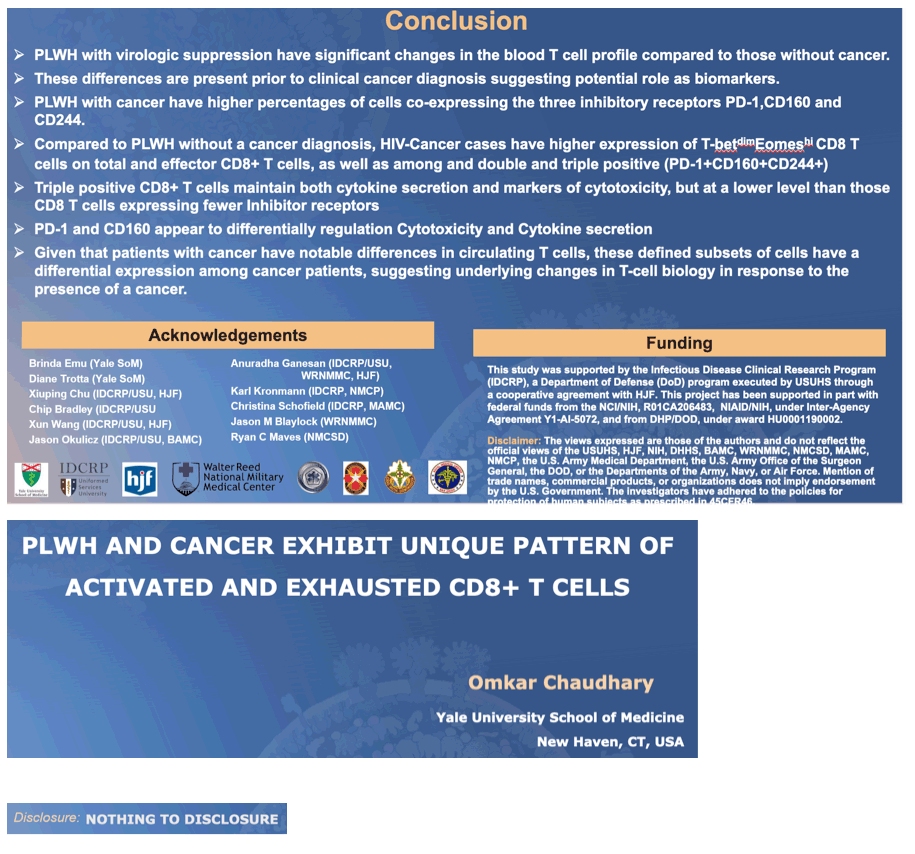
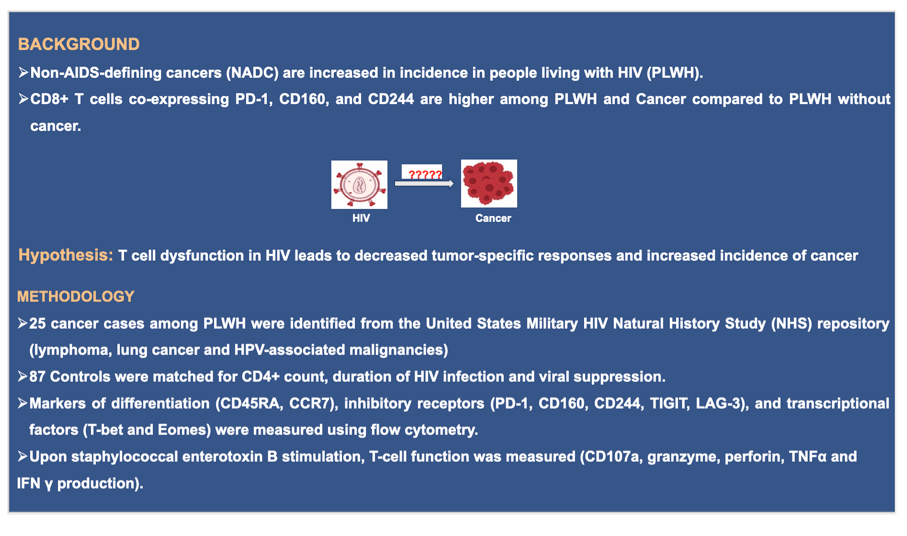
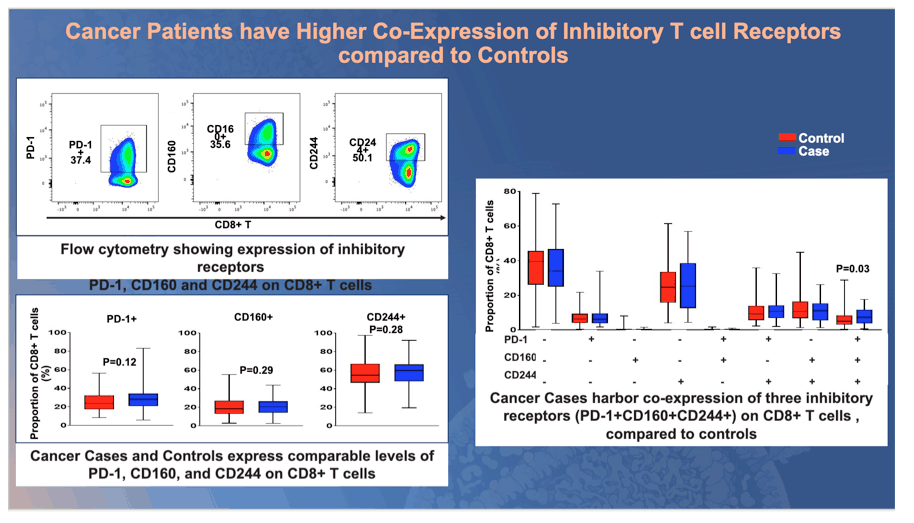
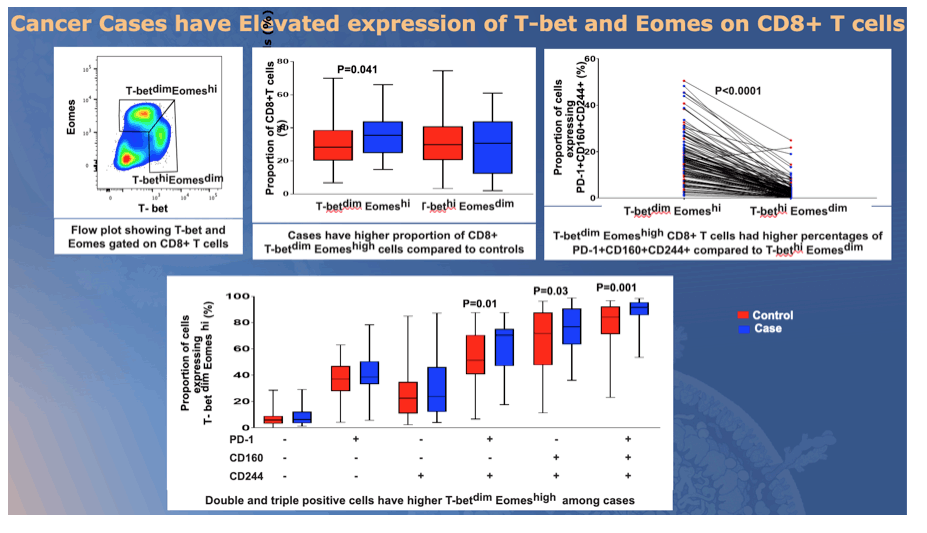
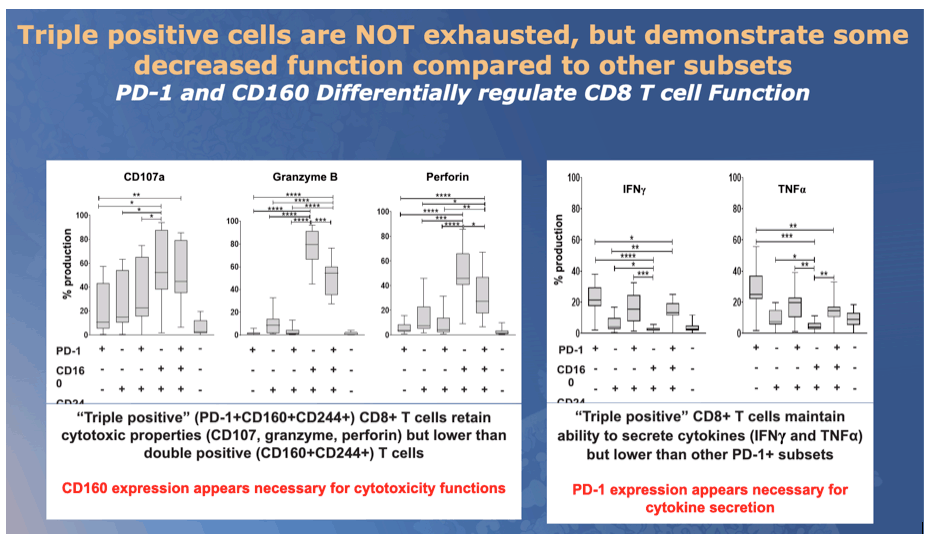
|
| |
|
 |
 |
|
|